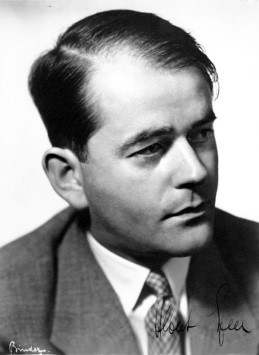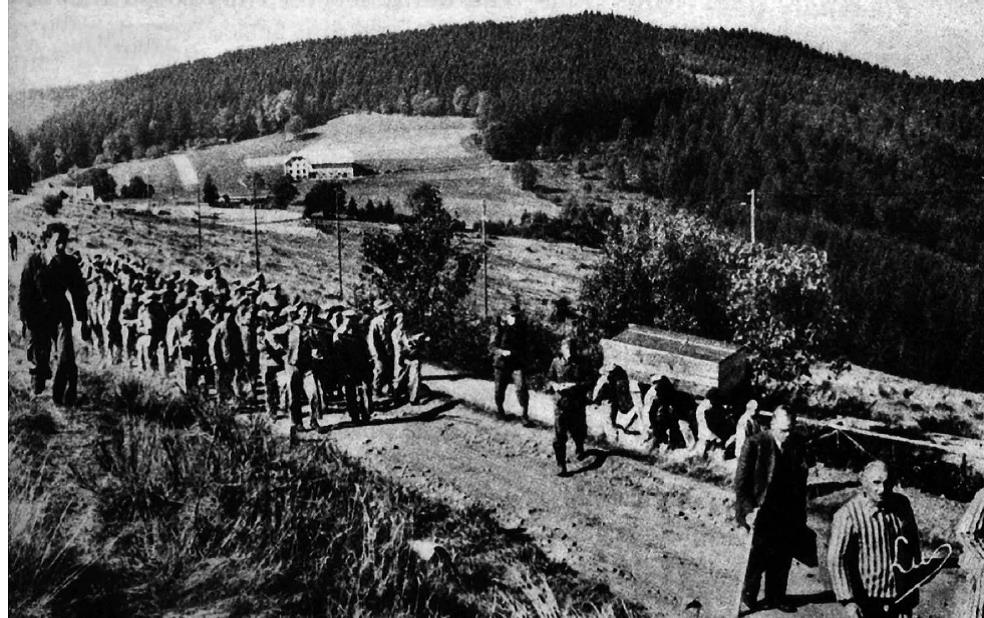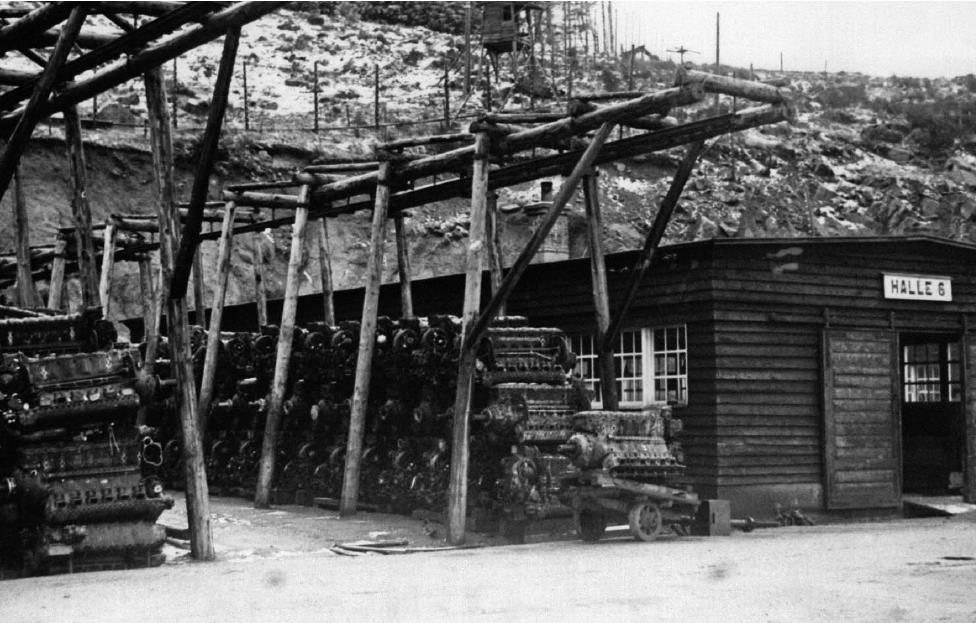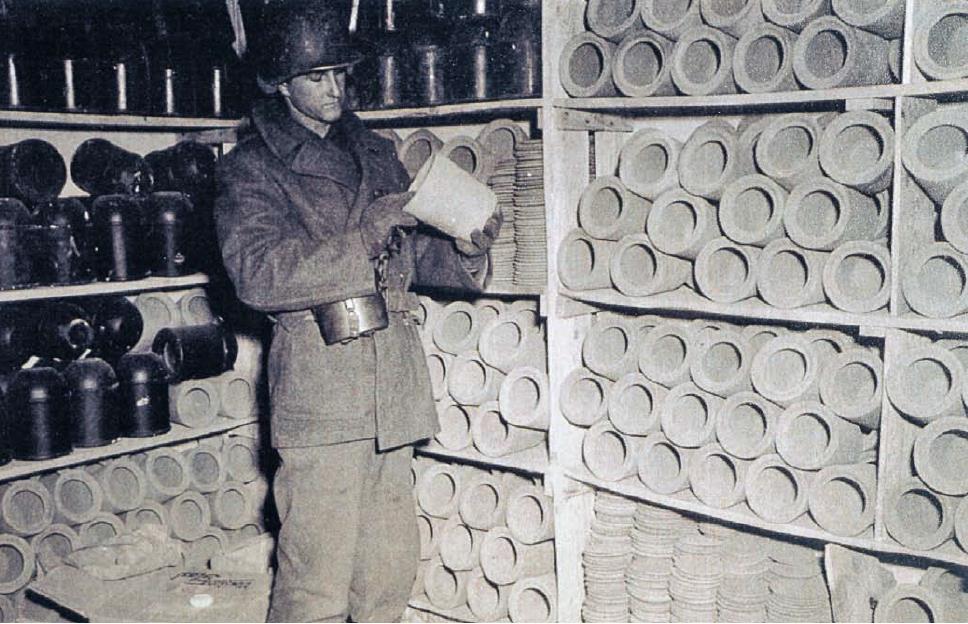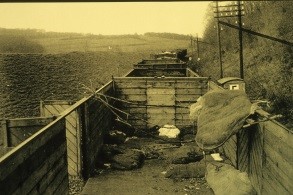Map
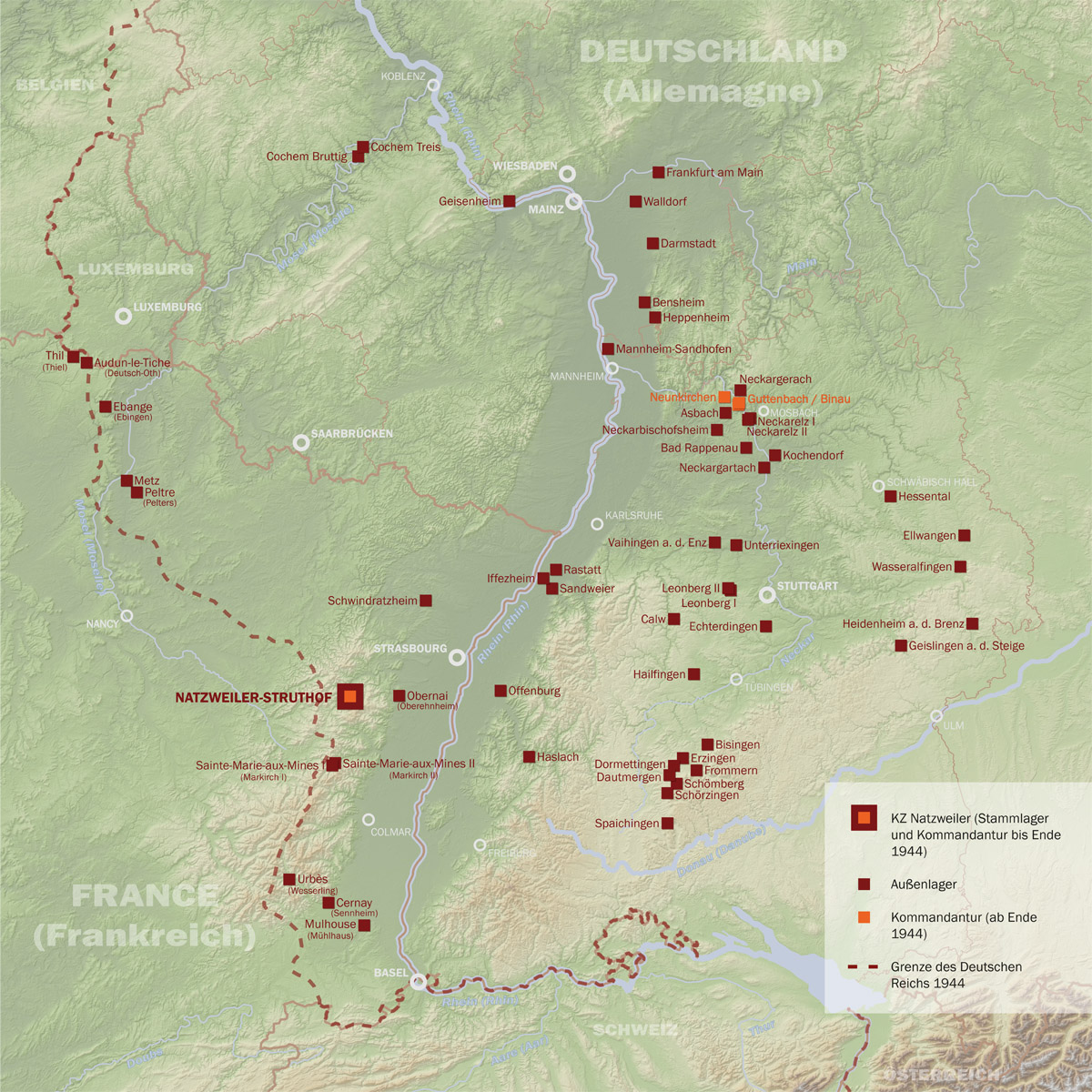



Natzweiler-Stuthof
1940: Pink granite for the new Berlin
...
Hitler’s architect Albert Speer and the SS geologist Karl Blumberg discover deposits of rare pink granite: in the annexed Alsace, at the western slope of Mont Louise, near the Struthof winter sport hotel. Speer orders the opening of the quarry complete with concentration camp. After the “final victory” the granite is supposed to be used for the construction of monumental buildings.




Natzweiler-Stuthof
1941: Establishment of the main camp
...
The first prisoners arrive. By the end of the year their number will be 539. The prisoners will at first be billeted on the hotel terrain. They build the camp, level streets, erect buildings for the SS. Construction work is extremely hard due to the steeply sloped terrain.




Natzweiler-Stuthof
Oberrehnheim
1942: Building and developing the camp structure
...
This year, 1,465 new prisoners are added to the camp. Most of the men are still busy working on the camp barracks (including the camp prison), the SS installations and the infrastructure. In the quarry, much construction work is needed as well. In December, the first satellite camp is established in Oberehnheim/Obernai.




Natzweiler-Stuthof
Oberrehnheim
Pelters
Sandweier
Rastatt
Iffezheim
Heppenheim
Metz-Feste Goeben
Ellwangen I
1943: Turn of the war and more satellite camps
...
Barracks and aircraft engines in the quarry. Photo: CERD
At the end of the year, 4,808 people are registered in the number book of Natzweiler. But the number of those present in the main camp is reduced – due to relocations and eight newly established satellite camps.
The “fortunes of war” have changed; quarrying granite loses its importance. It’s now mainly used as a punishment assignment. Now, defective airplane engines are repaired in the quarry barracks. Minister of Armaments Albert Speer pushes the war industry to maximum performance.
A small gas chamber for experimentation with combat gases is installed at the former hotel Struthof; 86 Jewish men and women are murdered there for criminal scientific experiments.




Natzweiler-Stuthof
Oberrehnheim
Pelters
Sandweier
Neckarelz I
Neckarelz II
Kochendorf
Geislingen/Steige
Thil-Longwy
Neckargerach
Neckargartach
Heidenheim
Asbach
Vaihingen/Enz
Wasseralfingen
Ellwangen II
Hessental
Echterdingen
Hailfingen
Unterriexingen
Neckarbischofsheim
Bad Rappenau
Erzingen
Dautmergen
Spaichingen
Leonberg (altes Lager)
Leonberg (neues Lager)
Schömberg
Schörzingen
Frommern
Bisingen
Haslach
Kochem-Treis
Sennheim/Cernay
Mühlhausen
Deutsch-Oth
Hayingen/Ebingen
Walldorf
Darmstadt
Wesserling/Urbès
Markirch I
Schwindratzheim
Markirch II
Kochem-Bruttig
Guttenbach / Binau
Neuenkirchen
Rastatt
Iffezheim
Heppenheim
MA-Sandhofen
Bensheim-Auerbach
Geisenheim
Darmstadt-Griesheim
Katzbach b. Frankfiurt
Metz-Feste Goeben
Ellwangen I
1944: Extreme extension of the satellite camps and the end of the part on the left side of the river Rhine
...
The number of prisoners explodes. Until September 24,000 new prisoners arrive, many directly at the satellite camps. The satellite camps are established in the vicinity of armament firms and military airfields. Until August, their number has increased to 36. After allied troops have landed in Normandy on June 6, 1944, they fight their way eastward.
On September 1, 1944, commandant Fritz Hartjenstein orders the main camp and the satellite camps on the left-hand side of the river Rhine to be abandoned. The Natzweiler camp complex quickly moves to the eastern side of the Rhine. In November 1944, the allies find the main camp empty. The command post is moved to the Baden villages of Guttenbach and Binau. Starting in fall, 20 new satellite camps are erected on the right-hand side of the Rhine. Alsace is liberated by the end of the year.




Sandweier
Neckarelz I
Neckarelz II
Kochendorf
Geislingen/Steige
Neckargerach
Neckargartach
Heidenheim
Asbach
Vaihingen/Enz
Wasseralfingen
Ellwangen II
Hessental
Echterdingen
Hailfingen
Unterriexingen
Neckarbischofsheim
Bad Rappenau
Erzingen
Dautmergen
Spaichingen
Leonberg (altes Lager)
Leonberg (neues Lager)
Schömberg
Schörzingen
Frommern
Bisingen
Haslach
Guttenbach / Binau
Neuenkirchen
Rastatt
Iffezheim
Calw
Offenburg
Dormettingen
Heppenheim
MA-Sandhofen
Bensheim-Auerbach
Geisenheim
Darmstadt-Griesheim
Katzbach b. Frankfiurt
1945: Reorganisation of “Natzweiler” on the right-hand side of the Rhine – death marches and the end.
...
The “Natzweiler concentration camp” now consists solely of satellite camps on the right-hand side of the Rhine. But work for the war industry continues unabated. The situation is exacerbated through bombing raids, lack of supplies and growing chaos. Still more prisoners are absorbed from the KZs that have been dissolved in the East – reaching a total number of 52.000.
From the end of March through mid-April, people are evacuated to other concentration camps, mainly Dachau. Many die on the way, others arrive at their destinations which are ruled by overcrowding and epidemics. Not until the beginning of May are they all free – or dead.
History of the Natzweiler concentration camp complex
By clicking on or moving the cursor over the dates, the pertinent information and the camp locations will be faded into the map.
One click to fade in; a second click makes the text disappear to show only the map.
By clicking on the arrow, the entire animation can be played. ![]()
![]()






